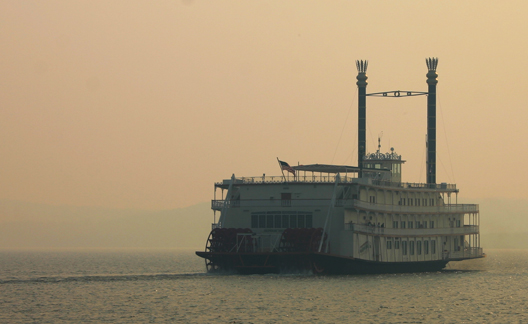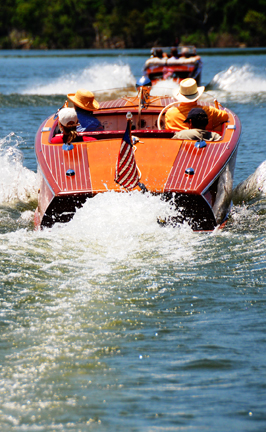Table Rock Lake:
by Joshua Heston
There are still folks who remember what the White River was like without the sprawling lake known today as Table Rock.
Completed in 1959, the dam which created the lake is massive, rising 252 feet above the stream bed and requiring over 1.2 million cubic yards of concrete.
There are still folks who remember living on mountains, in hollers, and in towns now submerged by lake waters.
Some may still remember the change bitterly.
Nevertheless, the lake has proven a critical moment in the timeline of Ozark — and Stone and Taney Counties — history.
“Near eight inches rain send White River and tributaries on rampage” headlined the White River Leader on Friday, May 14, 1943. “Branson Highway 80 bridge weakened by current is condemned. Missouri Pacific Bridge goes out Tuesday. Tracks north of Branson out. Telephone and telegraph interrupted. Red Cross sets up station.”
Without a tight rein on the White River, any heavy rainfall could could cause tremendous damage.
And from that viewpoint, Table Rock Dam has proven respectably successful.
However, construction of the dam set in motion a series of events that were, at best, unforeseen.
An influx of fisherman proved inspiring to the Mabe family of Nixa, who began entertaining folks nightly in downtown Branson.
Soon after, the Presley family opened a music theater west of Branson on Highway 76. The building had a flat cement floor so it could double as boat storage.
And Johnny Morris — the founder of Bass Pro — started selling fishing lures from of his father's liquor store on the south end of Springfield.
Maybe the rest is history.
Or it may just go to show what Ozarkers can do when given 1.2 million cubic yards of concrete.
September 14, 2008
The Naming of Table Rock
“Table Rock got its name, from an actual rock formation that, today, is the scenic overlook on Highway 165.
“It is a large, flat rock that was to be the original dam site. The Army Corps of Engineers, after drilling and taking core samples, learned the ground below Table Rock was too unstable for a dam of that size. There are caves and sinkholes in the immediate area.”
“The dam site was moved a mile and a half upstream to its present location. The lake filled to capacity in 1961 — almost a year ahead of schedule.”
— from John Fullerton, Branson historian, September 17, 2008
Contruction Highlights, Tablerock Lake Dam
September 3, 1941: Construction of Table Rock Dam authorized by Congress.
October 10, 1954: Ground-breaking ceremony for Table Rock Dam.
October 1954: Contract for construction awarded to Morrison-Knudsen and the Utah Construction Company.
May 24, 1955: Ceremony for pouring the first bucket of concrete.
August 1958: Table Rock Dam completed. Powerhouse still under construction.
June 14, 1959: Table Rock Dam dedicated.
Plate 1. Today, the Showboat Branson Belle plies the usually calm waters of Table Rock Lake. Stone County, Missouri. April 15, 2008.
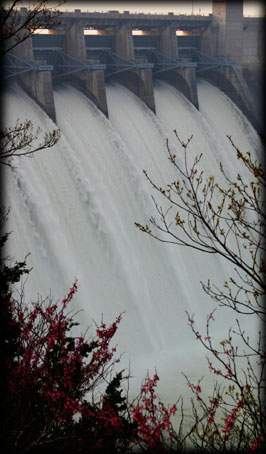
Plate 2. Table Rock Dam, all floodgates opened, framed by spring redbud. April 15, 2008.
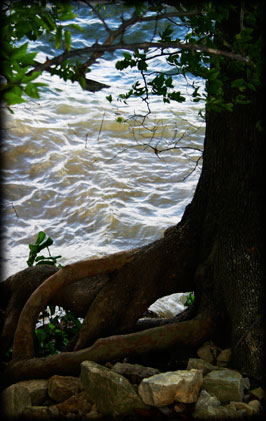
Plate 3. A lakeside sycamore’s roots weave into the water’s edge. September 14, 2008.
Foundation Rock
FOUNDATION ROCK underlying Table Rock Dam is a hard, fine, crystal-like dolomite belonging to the Cotter Formation.
Calyx holes are drilled during preliminary of the foundation rock in the damsite area and serve several purposes. The deep, open calyx holes themselves reveal the true nature of the foundation rock and are inspected by geologists who are lowered into the holes to map features such as bedding planes, joint systems, fractures, cavaties, water inflow and rock quality.
The deepest calyx hole of Table Rock Dam was 192 feet deep.
— from the Dewey Short Visitors Center, Army Corps of Engineers
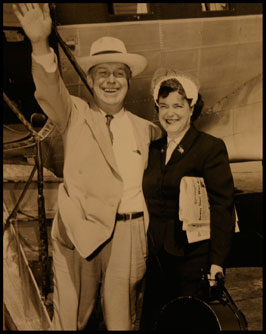
Plate 4. Dewey Short, photo from Dewey Short Visitors Center, Army Corps of Engineers.
Dewey Short, silver-tongued orator of the Ozarks:
Dewey Jackson Short was born on April 7, 1898, in Galena, Missouri. He attended Marionville College in Marionville, Missouri, and Baker University in Baldwin City, Kansas, before graduating from the Boston University School of Theology in 1922. He attended the universities of Berlin and Heidelberg and Oxford University in England.
In 1928, he was elected to Congress, where he served until 1956. While in Congress, Short attained the position of chairman of the Armed Services Committee and was instrumental in establishing the Table Rock Project.
Construction of Table Rock Dam was authorized by the Flood Control Act of 1941. The project was delayed by the intervention of World War II.
Ground-breaking ceremonies for the Table Rock Project were held in October of 1952, and construction of the dam was completed in 1959. A visitors' center was opened in 1976, and, in 1984, pursuant to an act of Congress, introduced by congressman Gene Taylor, that visitors’ center was named the Dewey Short Table Rock Lake Visitors' Center.
As undersecretary of the Army, Short participated in the dedication ceremonies for Table Rock Dam in 1959. Known nationwide for his spellbinding eloquence and oratory, Short earned the title of “The Silver-Tongued Orator of the Ozarks.”
He died on November, 19, 1979, and is buried in his hometown of Galena, Missouri.
